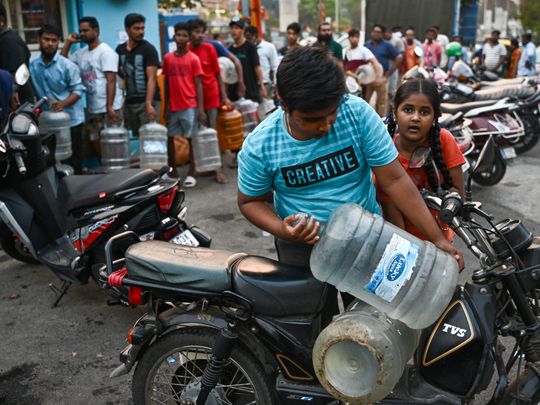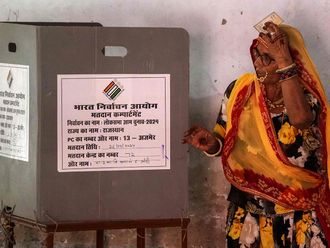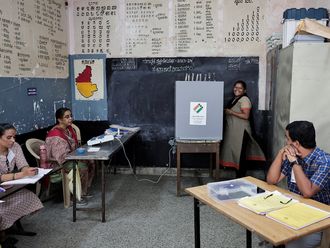
NEW DELHI: India’s main reservoirs have hit their lowest March levels in five years, government data showed, indicating a possible squeeze on drinking water and power availability this summer.
In major centres such as India’s ‘Silicon Valley’ Bengaluru, home to firms like Google, water supply is already being curtailed.
The 150 reservoirs monitored by the federal government - which supply water for drinking and irrigation and are the country’s key source of hydro-electricity - were filled to just 40% of capacity last week, government data showed.
In the southern state of Karnataka, home to Bengaluru, the main reservoir was down to 16% capacity.
Water reserves are the lowest for March since 2019, when reservoir capacity fell to 35% and saw southern cities such as Chennai run out of water.
The situation could escalate the crisis in central and southern cities which face extreme heatwaves in April and May.
India’s water resources get replenished only around June with pre-monsoon and monsoon rains.
Water wars coming
In other industrial states such as Maharashtra, Andhra Pradesh and agricultural states Uttar Pradesh and Punjab levels are below their 10-year averages.
Longer term, there is a risk of water wars if governments do not act now, said Sandeep Anirudhan, convener of the Coalition for Water Security.
The low water levels follow a monsoon season last year that saw the lightest rains since 2018, after the El Nino weather pattern made last August the driest in more than a century. The monsoon was also uneven, with some areas receiving more rain than others.
A senior official in the federal power ministry said the ministry is monitoring reservoir levels but does not yet anticipate a situation that could lead to a shutdown of plants.
“If the situation becomes worse due to lack of rains, drinking water supply will get priority over power generation,” he said.
The federal water resources ministry and the water commission did not respond to e-mailed requests for immediate comment.
India’s hydro generation in the 10 months from the beginning of the current financial year which began last April is down 17% despite strong electricity demand.
Hydropower generation in Asia has plunged at the fastest rate in decades amid sharp declines in China and India.
13,900 borewells in Bengaluru have been drilled to 1,500 feet
India’s tech hub of Bengaluru is struggling with water shortages amid a drought, with the crisis expected to escalate as summer approaches.
Authorities are supplying water to residents in the city of 13 million people using tankers as a lack of rainfall dries up thousands of borewells. The Karnataka government has imposed a cap on how much the tanker suppliers can charge to prevent price gouging.
Bengaluru is home to the country’s $194 billion IT services industry. Indian cities have intermittently struggled with water shortages due to the over-use of ground water and climate change causing a shift in the weather and reducing much-needed rainfall. With summer approaching, temperatures can climb to as high as 40C (104F), exacerbating the situation.
Residents should use water “very judiciously” and for essential purposes only, Ram Manohar, chairman of Bengaluru Water Supply and Sewerage Board, told a news channel earlier this month.
About a third of the city’s residents depend on groundwater, the Associated Press reported, citing authorities as saying some of the 13,900 borewells in the city have been drilled to 1,500 feet.
About 7,000 borewells have dried but authorities are making other arrangements, Karnataka Deputy Chief Minister D.K. Shivakumar said last week, adding there is no crisis.
Rapid urbanization has also contributed to the water shortage in the country. In 2019, the city of Chennai in the southern Indian state of Tamil Nadu suffered a water crisis for weeks due to heatwaves and a bad monsoon in 2018.












